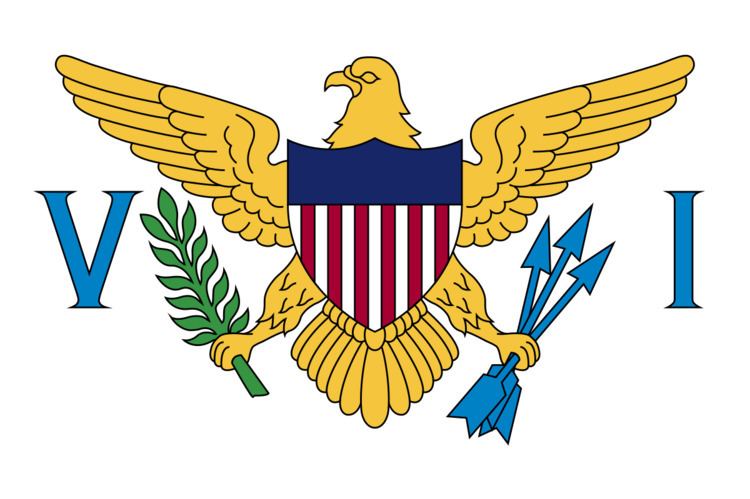 | ||
The flag of the United States Virgin Islands was adopted on May 17, 1921. It consists of a simplified version of the coat of arms of the United States between the letters V and I (for Virgin Islands). The eagle holds an olive branch in one talon, and three arrows in the other, representing the three major islands: Saint Thomas, Saint John, and Saint Croix. Additionally, the colors of the flag are: yellow, representing various characteristics of the territory and the flowers; green, symbolizing the hills; white, depicting the clouds; blue, representing the waters and red, representing love.
History
The concept or idea of a U.S. Virgin Islands flag began with the administration of Rear Admiral Summer Ely Whitmore Kitelle, who was sworn in as governor of the islands on April 26, 1921. He approached Mr. White, captain of the Grib, and Percival Wilson Sparks, and asked them for suggestions for a flag design. Sparks, a cartoonist, drew a design on paper. Afterwards Sparks transferred it on heavy cotton material, then asked his wife Grace and her sister Blanche Joseph to embroider the design.
